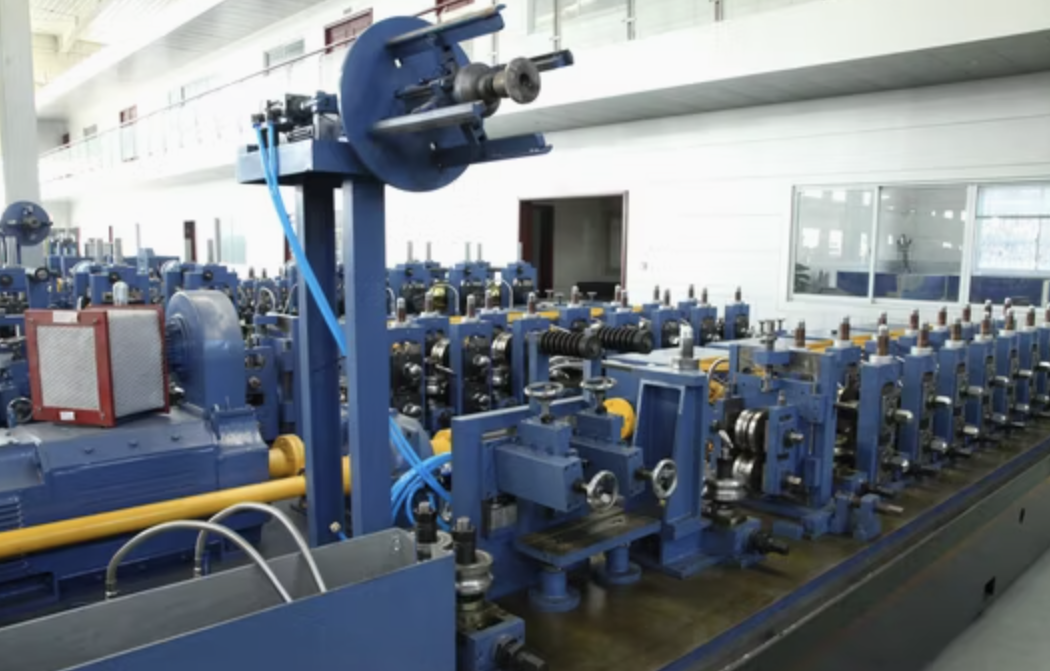To express an interest in this machine please submit the form below.

Not Sure What Machine You Need?
Select Your Profile, We'll Match It
Choose your desired profile drawing, and let Machine Matcher connect you with the best roll forming machine tailored to your needs.
Browse Profiles


A roofing sheet roll forming machine is a specialized industrial machine used to produce roofing sheets by feeding coils of metal through a sequence of rollers to create specific profiles. These machines are designed to create roofing sheets efficiently and precisely, ensuring durability and strength for various roofing applications. They are ideal for manufacturing a wide range of roofing sheet profiles, such as trapezoidal, corrugated, and standing seam profiles, making them suitable for industrial, commercial, and residential roofing projects.
The roofing sheet roll forming machine takes flat metal sheets (usually steel, aluminum, or copper) and forms them into custom roofing profiles. The process begins by feeding a metal coil into the machine. As the coil passes through each station, the rollers gradually shape it into the desired profile without cutting or breaking the material. Once the metal sheet reaches the end of the machine, it is cut to the required length by a hydraulic cutting system. These machines are equipped with automated systems and PLC controls, allowing precise operation and the ability to change profile sizes and shapes based on project needs.
Applications: Roofing sheet roll forming machines are widely used in industries such as construction, agriculture, and manufacturing for applications like building roofs, siding, and wall cladding.
Routine maintenance is crucial for ensuring the longevity of a roofing sheet roll forming machine. Common maintenance tasks include lubricating moving parts, checking roller alignment, inspecting the hydraulic system, and regularly cleaning the machine to prevent dust buildup.
Q1: What materials can a roofing sheet roll forming machine process?
A1: Roofing sheet roll forming machines can process various materials, including steel (galvanized, galvalume), aluminum, copper, and sometimes coated or pre-painted metals. The machine specifications should align with the material’s thickness and strength to prevent excessive wear or machine stress.
Q2: How does the machine handle different roofing sheet profiles?
A2: These machines can be customized with adjustable rollers to handle different profiles. Some machines come with a multi-profile option, allowing the production of multiple profile types without the need for separate machines. For machines designed to produce only one profile, modifications may be needed to change to a different profile.
Q3: What are the common power requirements for these machines?
A3: Most roofing sheet roll forming machines require three-phase power (commonly 380V, 50Hz). However, the power requirements can vary based on the country and the machine’s specifications. Customizable power options are often available to meet local standards.
Q4: Can the machine produce custom lengths of roofing sheets?
A4: Yes, the machine can be programmed to produce sheets in any length. The length setting is usually configured on the PLC control panel, ensuring accurate, repeatable cuts for each sheet.
Q5: What are the benefits of a PLC control system?
A5: A PLC (Programmable Logic Controller) provides precise control over the machine's operations, including roller speed, cutting length, and profile selection. The PLC enhances accuracy, reduces waste, and allows operators to manage the machine easily with a user-friendly interface.
Q6: Is this machine suitable for high-volume production?
A6: Yes, roofing sheet roll forming machines are designed for high-volume production. Machines with higher speeds and automatic stacking or decoiling features are especially suitable for continuous, large-scale production, providing high efficiency and minimal downtime.
Q7: How is the cut quality maintained at high speeds?
A7: Most roofing sheet roll forming machines use a hydraulic cutting system with servo motors to ensure accurate cuts even at high speeds. These systems reduce burrs and ensure a clean finish, maintaining quality across high production volumes.
Q8: What maintenance is needed to ensure the machine operates smoothly?
A8: Regular lubrication of moving parts, checking the alignment of rollers, inspecting hydraulic fluid levels, and ensuring cleanliness are essential maintenance tasks. This routine helps prevent wear and tear, reduces the risk of breakdowns, and prolongs machine life.
Q9: Can the machine handle pre-painted or coated sheets?
A9: Yes, roofing sheet roll forming machines are generally capable of processing pre-painted and coated sheets. However, the rollers should be carefully calibrated to avoid scratching the coating, ensuring the finished product meets aesthetic and functional standards.
Q10: What is the average lead time for machine setup and installation?
A10: The setup and installation time for a roofing sheet roll forming machine depends on its complexity and the facility's setup. On average, setup may take between a few days to a week, including machine calibration, PLC programming, and operator training.
Copyright 2026 © Machine Matcher.